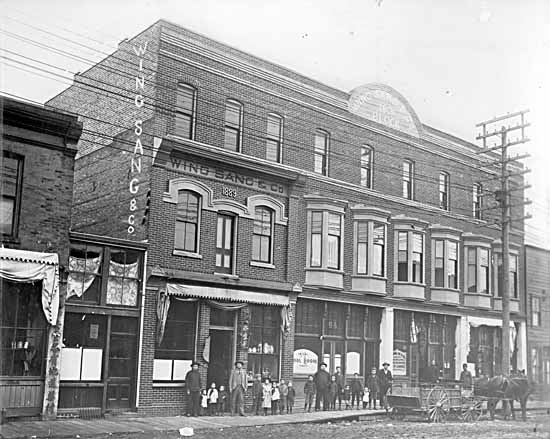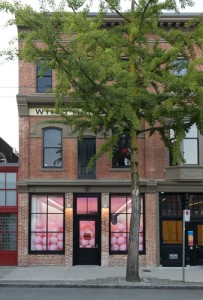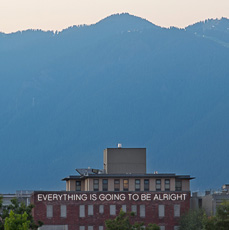For more stories about Chinatown see: At Home with History: the secrets of Greater Vancouver’s Heritage Homes
Last October the Feds designated Vancouver’s Chinatown a National Historical Site. In November, the National Geographic named the Dr. Sun yat-sen Gardens one of the top 10 city gardens in the world. It’s long overdue recognition for one of the largest and oldest Chinatowns in North America.
I took a walk around Chinatown last week. On the surface, not a lot has changed in the last 20 years or so. There are the dim sum restaurants, herbal shops, tacky ornament shops and the in-your-face production of food—duck and pig carcasses, live bullfrogs in buckets on the sidewalk, tanks full of exotic fish and an array of fruit and vegetables still a long way from mainstream.

Yet for all the traditional elements, Chinatown is an area in transition. Condos are going up, bars, coffee shops and trendy clothes stores are nudging up against traditional grocery stores, and new business is moving in.

Bob Rennie was one of the first to see the potential when he bought the Wing Sang Building for a million bucks in 2004. He spent another $10 million turning the back of the building, where Yip Sang’s three wives once raised their 23 children, into a private art space to house his massive collection. Past exhibits by Mona Hatoum and Richard Jackson are edgy and interesting, but my favourite was Martin Creed’s where you walked through an office filled with pink balloons, dodged runners on the main floor and sipped champagne while looking at broccoli. Creed is also behind the controversial “everything is going to be alright” neon sign on the building’s rooftop garden which is clearly visible from the Sun yat-sen Gardens, and a good chunk of Vancouver. Rennie regularly holds free public tours of the building and art gallery, but next year he turns into a satellite gallery for the Royal BC Museum with an exhibit of the young Emily Carr.

Boutique agencies like St. Bernadine Mission Communications are finding costs are cheaper in Chinatown. David Walker and Andrew Samuel bought a newish space at East Georgia and Main, a block away from the oddly garish Jimi Hendrix shrine. In keeping with the heritage—it was once a Chinese Laundry—the partners installed the Kee’s Laundry Gallery with photography and art displays from other agency creatives in the city.
It’s transforming yes, but there’s a strong sense of community. Residents of Strathcona and Chinatown were asked to vote on the kind of business they wanted to see open at 243 Union Street—what was once Hogan’s Alley—the black part of town before city planners replaced it with the Georgia Viaduct in the 1960s. Locals decided they wanted a local grocery store on Union and named it Harvest. They even got to choose the graphic designer who’d brand it—Naomi Macdougall from a list of six.
© All rights reserved. Unless otherwise indicated, all blog content copyright Eve Lazarus.




1 comment on “In the year of the dragon: the changing face of Chinatown”
[…] a smart move. I’m always surprised at how many Vancouverites have never heard of the Dr. Sun Yat-sen gardens, visited the Space Centre or taken the Stanley Park train (you don’t need kids for […]